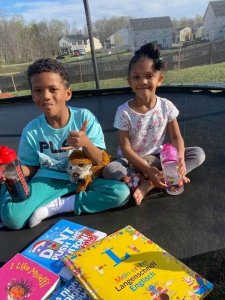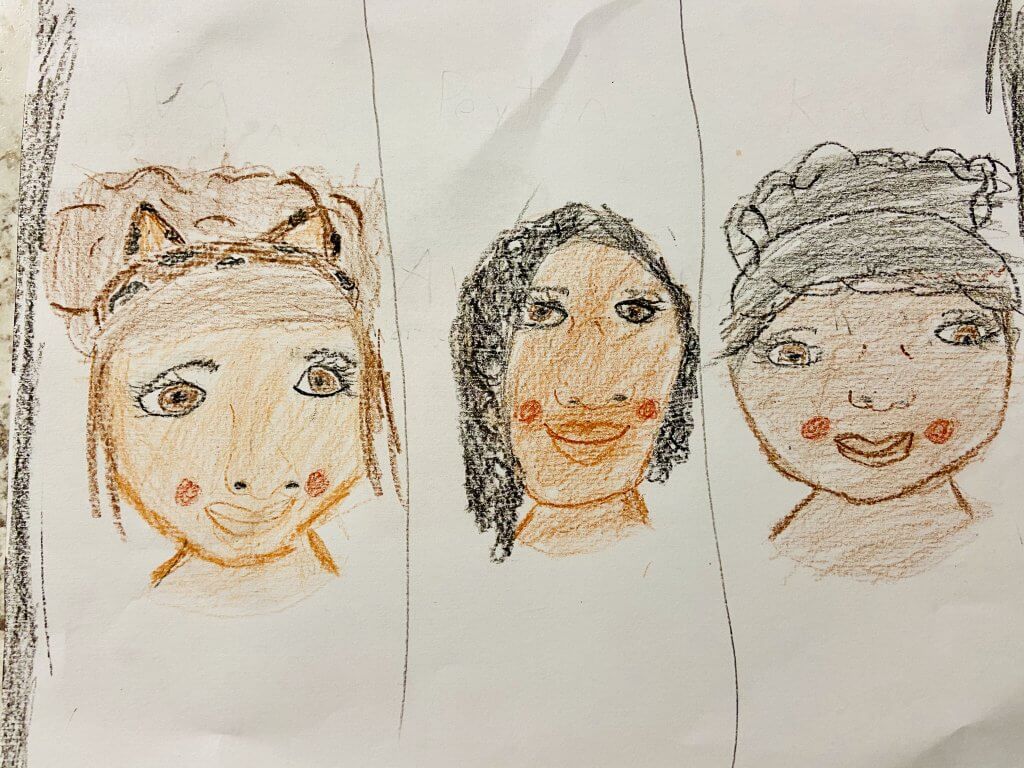For parents, teaching kids about the effects of racism can be unnerving. But there are a few key things you can focus on to be better prepared.
My husband and I are addicted to watching the latest stories on racial injustice in our country. Visuals of clouds of tear gas, people yelling in protest, and racial awareness debates are nonstop — including the video clip of the murder of George Floyd.
It popped on the screen as I heard shuffles approaching. I jabbed my husband’s side to signal the kids are coming as he quickly scrambles for the remote like a hot potato to try and flip the channel, or at least pause the segment so they won’t see it.
We have two beautiful, brown-skinned children, and we’ve struggled with understanding when we should talk with them about racism. I want them to be informed but I feel like a small part of their innocence will dim to know how hateful some people can be, and the thought makes my breath catch.

Many parents, especially those who are African American, tussle with this. Diana Williams is a military spouse and the biracial mother of a 16, 7 and 4-year old. She admits how hard it is.
“I’ve been having this debate in my mind. Do I pretend it doesn’t exist for my little one’s sake, or do I educate my kids about race in America, and when is it too soon?” Williams said.
She decided to tackle it with literature.
“I have learned that if we as parents don’t address these hard topics, the world will. And often their answer comes from painful experiences that they don’t see coming.”
Dr. El Brown, educational consultant and former DOD teacher, works with parents and service providers who interact with young children. She was caught off guard when her son (who is African American) said, “George Floyd was killed by a police officer because he was black.”
In this moment she didn’t respond as a professional, but as a mother whose son was hurting. The most important takeaway she wanted for him was to know that the person’s behavior did not mean there is anything wrong with him or his blackness. It’s systemic.
It gets harder every day to avoid this talk, so my family took the leap. And while it’s not a topic that you ever feel ready to dive into, here are seven steps that will help make it effective:
Do some introspection.
First, ask yourself what stereotypes affect your decisions. Brown says, “We can’t talk to children until we completely understand what position we’re taking as a family.”
Speak in a language your child understands.

You know what measures of this your child can digest. In my home, we simply had our kids draw their friends using Crayola’s new multicultural crayons. They noticed the differences in skin colors, and this is how we started talking about race.
Use examples from their experiences.
“If you try to introduce an abstract term [like racism] to a child without a concrete foundation it may come off more like words in a lecture. It may not resonate with the child,” Brown said.
Listen to Dr. Brown’s podcast on talking to your kids about social justice.
While watching Disney Jr. we saw a commercial in support Black Lives Matter. I used this moment to explain the movement in a way my children could understand.
Don’t lecture.
Take your time explaining and addressing questions for your children, then move on. Don’t linger.
Make it ongoing.
This isn’t a one and done discussion. As kids grow their exposure changes. Keep asking their perspective and encourage them to share any racist experiences they have encountered, whether they saw someone being mistreated or they themselves were.
Affirm them.
I constantly affirm my kids’ significance, abilities, and beauty. It’s important that they are confident in who they are before I told them how to handle what someone else may think of them.
Model behavior.
Are you fair and equal in how you treat people of a different race? Children will always learn more from your actions than any conversation.
Lessons on equality start in the home and our military lifestyle offers the opportunity to connect with people from various cultures and backgrounds. By intentionally creating a diverse community of friends with our families we can build a reality for children that didn’t exist 60 years ago.
Tensions around social injustice are high right now. But by taking a breath and making a plan, this talk can be educational and helpful in establishing another layer of communication and trust between parent and child.
“We want to give our children high quality information that could potentially prevent them from being harmed and have them walk away with a positive self-image,” Brown said.
Resources for talking to your military kids about racism:
Follow Straight Talk with Dr. El on Facebook

